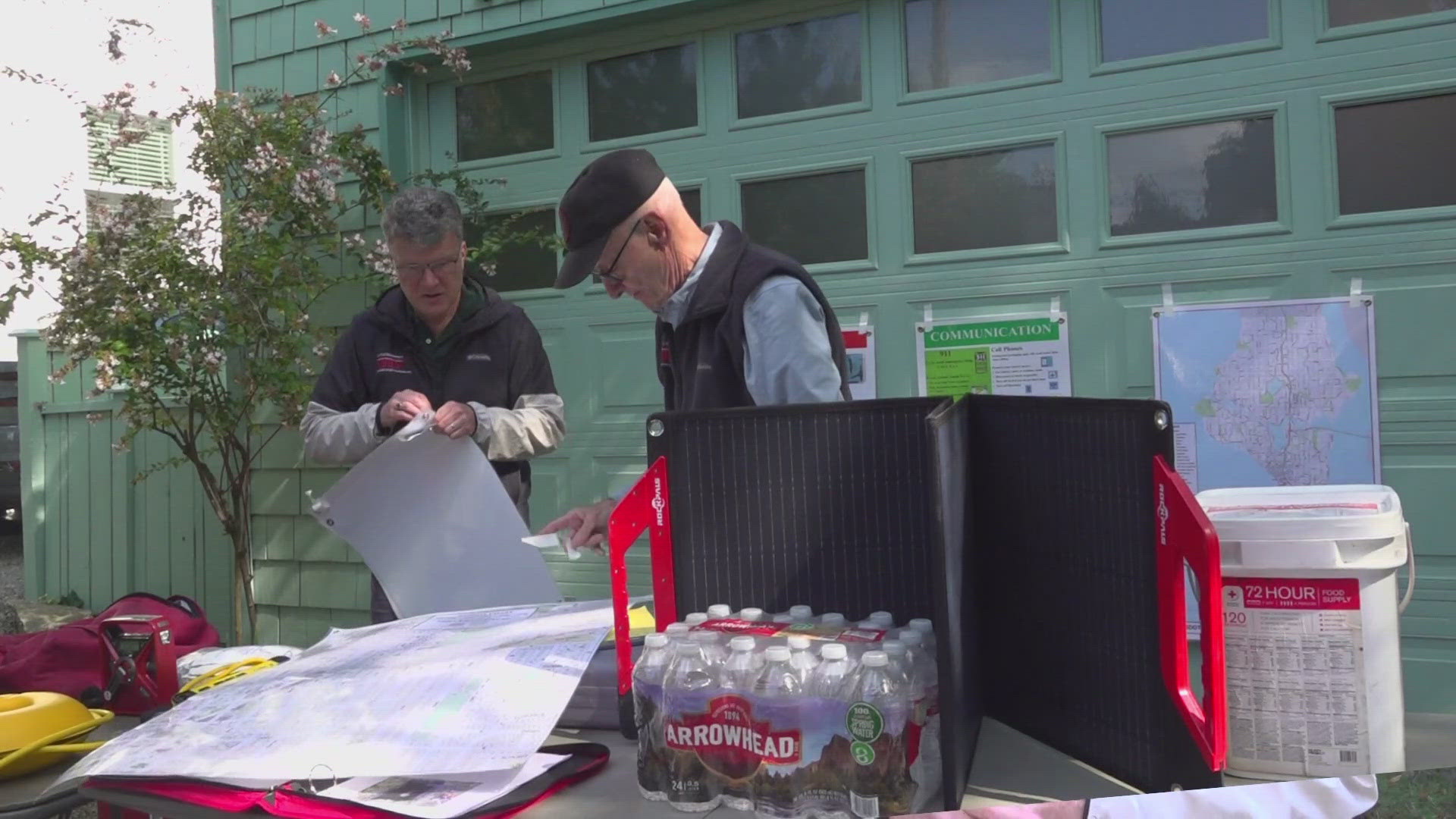SEATTLE — The "Seattle Emergency Hub" in Madison Valley is just one of dozens organized across the city. The hubs are volunteer-run groups with meet-up points to share communication and responses in the aftermath of a potential disaster like an earthquake.
"The neighborhood is going to be what brings us together," said Frank Lawler, a resident of the neighborhood involved in organizing the hub. "The reality is, when terrible things happen in terms of natural disasters- people generally tend to get together, they tend to show their best sides."
Lawler said that before 2019, he hadn't thought much about the threat of earthquakes.
"Oh, not at all," Lawler said.
But when a neighbor raised the issue in conversation and pitched the idea of forming an emergency hub -- he quickly got informed and involved. City-wide, Seattle Emergency Hubs prepare for emergency situations.
Neighbors plan a location where they'll meet up and be able to communicate; get educated on what could happen in case of different types of emergencies; and conduct drills to put what they've learned into practice. It's just one way community members are doing their part to prepare for threats like "the big one."
Participation in the hub has helped Lawler prepare his own home and given him a sense of comfort and agency should there be an emergency.
"The neighborhood is going to be what brings us together," Lawler said. "The reality is, when terrible things happen in terms of natural disasters, people generally tend to get together, they tend to show their best sides."
The Nisqually Quake in 2001 was, for many Olympia and Seattle-area residents, a wake-up call about the local threat earthquakes pose. The 6.8 magnitude earthquake injured 400 people, though fortunately no one was killed as a direct result of damage. The earthquake highlighted some vulnerable assets around Puget Sound cities, including bridges and buildings.
Since then, more school systems have called for increased funding to improve seismic safety. Agencies such as the Washington State Department of Transportation (WSDOT) and the Seattle Department of Transportation (SDOT) have conducted work on roads, tunnels and bridges to prepare for the threats of quakes.
There is also more awareness of the concern unreinforced masonry buildings could collapse during a big earthquake. For example, Seattle keeps track of known concerns and Seattle City Council passed a resolution to create a resource program to aid property owners in retrofitting operations.
As for what everyday people can do, the Washington Emergency Management Division encourages people to get "disaster ready." It offers a guide with one task residents can do each month to be ready by the end of the year.
"Despite the fact we will have an earthquake today — and it will be a big and potentially life-changing event — you can survive if you take the action to get prepared now," Emergency Management Division Earthquake and Volcano Program Manager Brian Terbush said. "Practicing your drop, cover, hold on, taking those actions to mitigate your home right now, secure things, all of that's going to make your life much easier."
According to the department's guide, a basic home disaster kit should include:
- Water: 1 gallon per person per day
- Food: non-perishable items such as canned meats, fruits, vegetables, soups and juices; high-energy foods such as peanut butter, granola bars, trail mix and jerky
- Important documents including insurance policies, family records and copies of photo ID
- At least a 7-day supply of all needed medications, as well as first aid items
- Tools including flashlights with batteries, a can opener, a fire extinguisher and battery-operated radio, duct tape and plastic sheeting
- Health and sanitation: liquid soap, bleach, toilet paper, feminine supplies, diapers
- Warm clothing, blankets and rain supplies
Learn more specifics here.
For his part, Lawler also has items such as a solar-powered light, a small generator, a camping stove, maps of Seattle and King County, a reflective vest, a shut-off wrench, a shovel, separate containers for portable toilets (one for feces and one for urine), a sharpie marker, and extension cords.
For people just starting out in preparing themselves, he recommends the Washington Emergency Management Division's "Prepare in a Year" program, which portions out tasks month by month.

